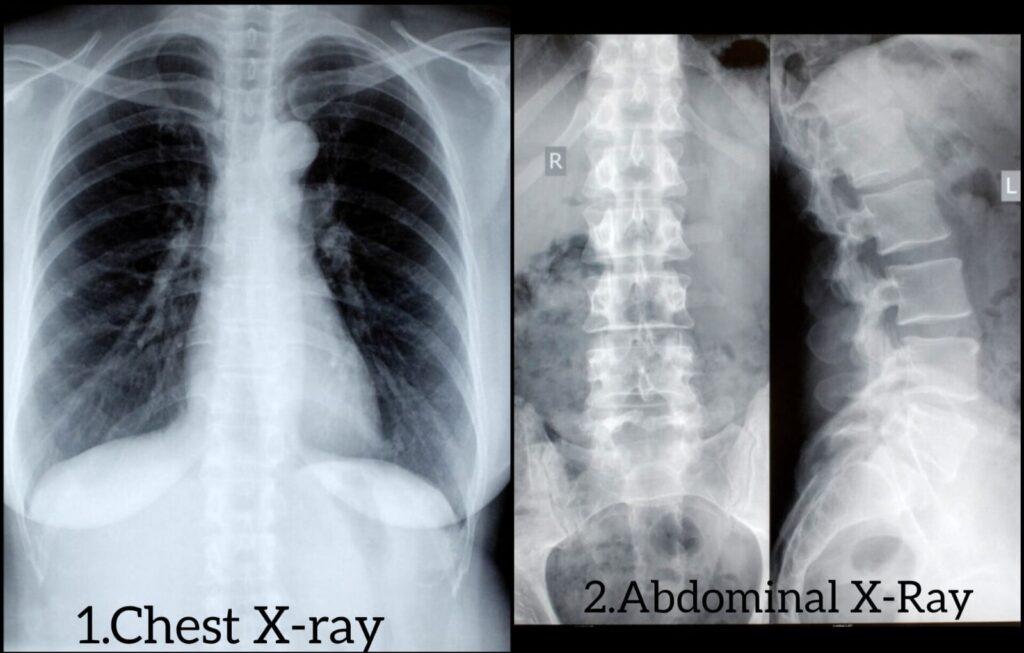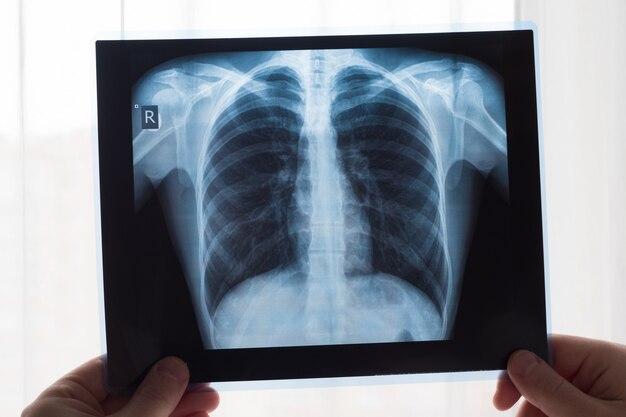It is usually necessary for doctors to take X-rays to diagnose and confirm a few conditions but is it safe to do so? Let us decide how many X-rays are safe in a month and are x rays harmful.
What are X-rays?
X-rays are a type of diagnostic imaging scan that has been used for over a century. They produce images of bones, tissues, and organs within the body using electromagnetic radiation.
X-rays are absorbed or scattered by various tissues as they pass through the body, resulting in the production of an image on a detector.
There are commonly two types of X-rays-
A chest X-ray is a sort of imaging examination that is commonly used to evaluate the heart, lungs, and chest wall. It might aid in the detection of diseases including pneumonia, lung cancer, collapsed lungs, and rib fractures.
An abdominal X-ray depicts the organs of the abdomen, such as the stomach, intestines, liver, and kidneys. It can aid in the identification of issues such as intestinal obstructions, kidney stones, and diabetes.

Are X-rays Harmful?
Is x-rays dangerous? If X-rays are not handled appropriately or if a person is exposed to high levels of radiation, they can be dangerous. X-rays are ionizing radiation, which means they have enough energy to dislodge closely bonded electrons from atoms, potentially causing damage to biological cells.
What are the effects of X-rays on the human body?
There are a a lot of chest X-ray side effects which we are going to discuss. Tissue Damage: X-ray radiation can cause tissue damage. Prolonged or excessive X-ray exposure can harm the body’s live cells and tissues. Radiation burns, skin reddening, and, in severe situations, tissue necrosis (cell death) can follow.
High doses of ionizing radiation, such as those used in cancer treatment radiation therapy or from occupational exposure, can raise the risk of cancer over time and have a bad effect of x-ray on the human body. However, the risk from typical medical X-rays is low.
There are a lot of side effects of X-rays on the human body so it is important to understand that extremely high doses of X-ray radiation, such as those seen in nuclear accidents or atomic bomb blasts, can produce acute radiation sickness. Nausea, vomiting, diarrhea, and, in severe situations, radiation sickness or death may occur.
It is critical to emphasize that the danger of injury from medical diagnostic X-rays is normally very minimal since dosages are carefully managed and maintained as low as reasonably practicable while still providing the essential diagnostic information. Furthermore, the body contains inherent healing systems that help to restore some of the damage produced by ionizing radiation.
How long does X-ray Radiation stay in the body?
X-ray radiation, like other kinds of ionizing radiation, does not “stay” in the body the way that other chemicals or substances do. Instead, the consequences are almost always instantaneous, and the radiation itself disappears swiftly.
When an X-ray is given, radiation travels through the body and creates an image on the X-ray film or detector. When the exposure period is completed, the radiation source is shut off, and the radiation stops. There is no leftover radiation in the body.
How Many X-rays Are Safe in a Month?
How many X-rays can I have in a month? The answer to this question that came across a lot of times is that the number of safe X-rays in a month varies based on various factors, including the type of X-ray, the precise medical condition being checked, the patient’s age and health, and the reason for the X-ray. It is critical to note that there is no general “safe” or “unsafe” quantity of X-rays each month.

However, there are several aspects to consider before having frequent X-rays, including high-dose procedures, individual variances, and low-radiation X-rays. The safety of X-rays in a month is decided by careful clinical judgment and respect to radiation safety standards, not by a fixed quantity.
So, while there is no definitive answer to how many X-rays are safe in a month, always consult your medical provider to understand the adverse effects of X-rays on your health.
How to reduce the effect of X-rays on the human body?
Reducing the possible adverse effects of X-rays on the human body entails employing a variety of measures to reduce radiation exposure while still receiving the essential diagnostic or therapeutic information. Here are some important steps that may be performed to reduce the negative effects of X-rays.
1. Use of lead shields and aprons to protect sensitive body regions that are not being examined during the X-ray operation. This contributes to limiting needless radiation exposure in these locations.
2. Collimate the X-ray beam to focus it solely on the target location. Avoid exposing uninvolved or nearby body areas to radiation.
3. Before performing X-ray operations on women of reproductive age, screen them for pregnancy. If pregnancy is possible, healthcare practitioners should investigate other imaging procedures that do not utilize ionizing radiation or postpone the procedure.
4. Ensure that X-ray machines are calibrated and maintained properly in order to give the optimal radiation dosage and minimize Healthcare practitioners who utilize X-ray equipment should undergo regular training and instruction on radiation safety and best practices.
Precautionary Giveaway-
Excessive use of X-rays, whether for medical diagnostics or for any other reason, might offer health hazards owing to cumulative radiation exposure. To minimize unneeded or excessive X-ray exposure, healthcare personnel, radiologic technicians, and individuals must exercise extreme caution.
It is usually a good idea to remain in continual contact with their healthcare professionals for guidance and to avoid unnecessary concerns.



